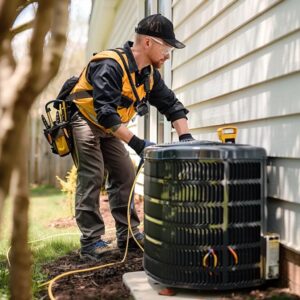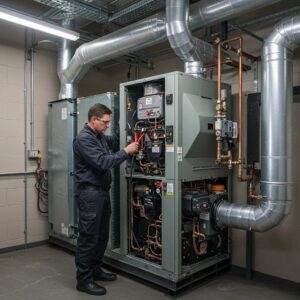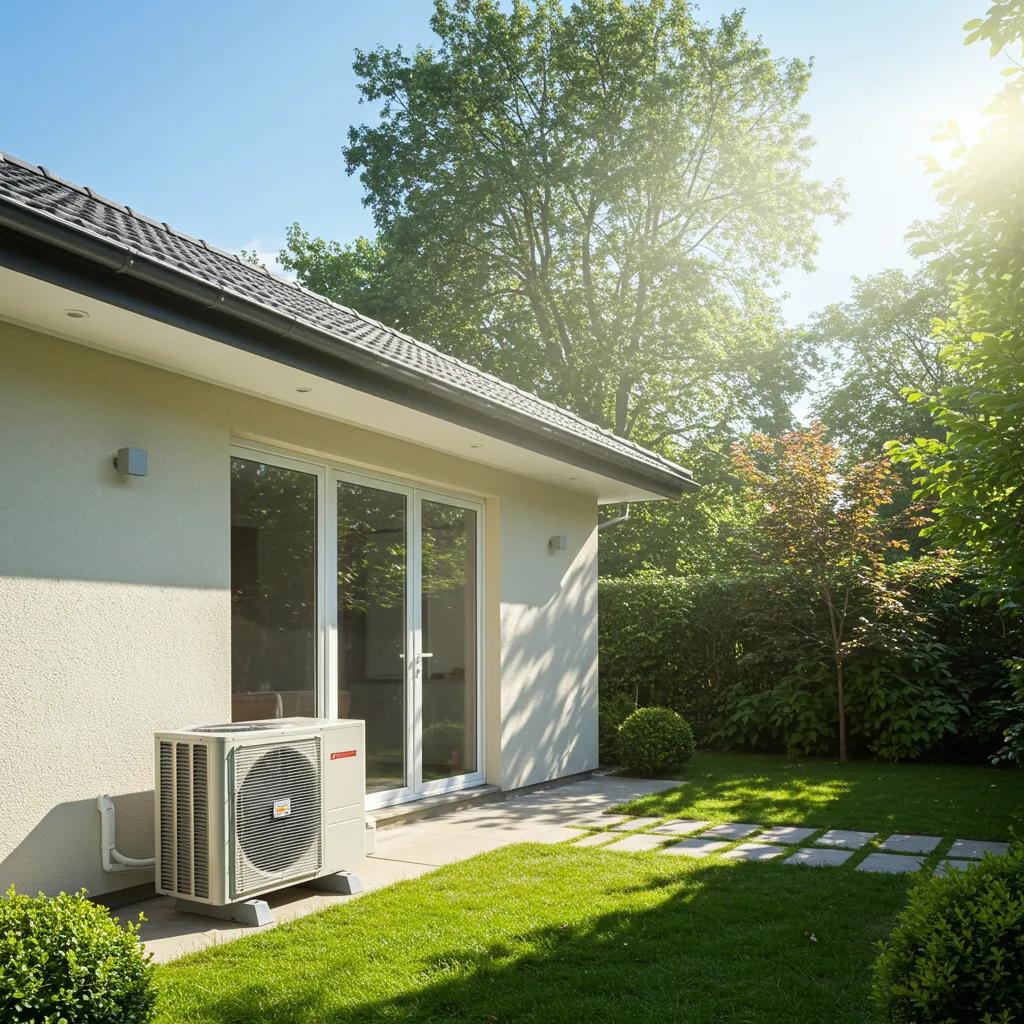
Brookhaven Residential AC Installation: Your Guide to Home Comfort and Energy Savings
Getting a new AC system installed in your Brookhaven home means choosing, sizing, and professionally installing an air conditioner that keeps you comfortable while using less energy. This guide covers why expert installation is key, how your system choice impacts performance in Brookhaven’s climate, and what to expect regarding costs, timelines, and efficiency. Many Brookhaven homeowners deal with old systems, high energy bills, and uneven cooling. A correctly sized, energy-efficient system fixes these issues by boosting comfort, reducing run times, and lowering operating expenses. You’ll learn about central air, heat pumps, and ductless mini-splits, how SEER ratings and proper sizing lead to energy savings, and the entire process from your initial estimate to the final system check. We also provide clear local cost estimates, helpful checklists for your on-site assessment, and straightforward signs that it’s time for a replacement instead of a repair.
Why Professional AC Installation Services Are Essential in Brookhaven, GA
Professional AC installation in Brookhaven means precise sizing, work that meets all codes, and expert refrigerant handling for reliable cooling and lower long-term costs. Proper installation prevents common problems like incorrect refrigerant levels or poor airflow, which reduce efficiency and shorten equipment life. It also keeps your manufacturer’s warranty valid and ensures compliance with local permit rules. Homeowners enjoy better comfort, predictable energy use, and fewer service calls when certified technicians follow a structured installation process. Choosing a pro also means you have recourse for liability and code adherence, safeguarding your home and investment.
When picking a contractor, consider their expertise, certifications, and local experience, as these directly impact your system’s long-term performance and your satisfaction. The next section explains what makes a local provider trustworthy and how that translates into quality work.
What Makes Air Heat America the Go-To HVAC Installer in Brookhaven?
Air Heat America is your local choice for expert service, offering on-site estimates for new installs, licensed and insured work, and certified technicians for Brookhaven residents. We emphasize free estimates for new installations and offer financing options to help you explore your choices without upfront financial pressure. Our technicians demonstrate formal expertise in diagnostics, load calculations, and installation techniques that minimize errors and boost efficiency. For Brookhaven homeowners, this means clear pricing, documented quality work, and technicians trained to handle our local climate challenges.
If you’re comparing providers, ask for proof of licensing and certifications, and inquire how free estimates account for ductwork condition and your energy goals. A thorough on-site assessment is the first step to accurate system selection and cost projections.
How Do Our Technicians Guarantee Quality AC Installation?
Our technician’s advanced knowledge in HVAC system theory, diagnostics, and safe installation practices, which significantly reduces installation errors and enhances system performance. Certified technicians are skilled in performing accurate Manual J load calculations, verifying refrigerant charge and airflow, and adhering to manufacturer installation guidelines—all crucial for maintaining efficiency and warranty coverage. This expertise leads to fewer callbacks and more consistent indoor comfort throughout the system’s lifespan. Homeowners benefit from measurable performance improvements when certified teams handle the installation and validation tests.
Understanding the value of certification leads to the next important consideration: why licensing and insurance are vital for homeowner protection and permit handling.
What Are the Advantages of Hiring Licensed and Insured HVAC Services in Brookhaven?
Hiring a licensed and insured HVAC contractor protects you from financial and legal risks if the work causes damage or doesn’t meet local code requirements, and it ensures the installer is familiar with permit processes. Insurance covers liability during on-site work, and licensed contractors typically know DeKalb County or Brookhaven permitting rules for equipment changes and system upgrades. Properly licensed work often aligns with manufacturer warranty terms, helping to keep your warranty claims valid. Choosing a contractor with these protections minimizes your risk and ensures a smoother installation experience.
With licensing and insurance covered, the next practical step is selecting the right system for Brookhaven’s climate and your home’s specific features.
Choosing the Right Residential AC System for Your Brookhaven Home
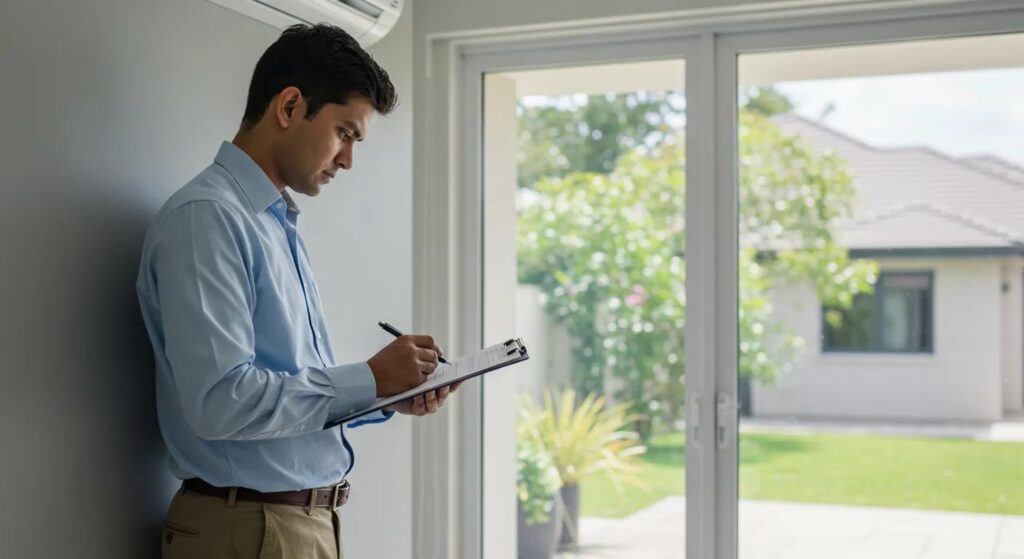
Selecting the ideal residential AC system for your Brookhaven home involves matching the system type, SEER rating, and ductwork condition to your house’s size and humidity control needs for optimal comfort and energy savings. System choice is a balance between initial cost, operating efficiency, and installation complexity. Correct sizing and compatibility with your existing ductwork are critical for real-world performance. Homeowners prioritize consistent whole-home comfort, effective humidity control, and predictable operating costs when considering central air, heat pumps, or ductless mini-splits for their Brookhaven residence. A professional load calculation and duct inspection are essential to prevent oversizing or undersizing, which can lead to short cycling or inadequate dehumidification.
Below is a comparison table that outlines system types and their suitability for Brookhaven’s specific conditions, helping you make an informed decision.
| System Type | Typical Cost Range | Best-Suited Home Type | Brookhaven Climate Pros/Cons |
|---|---|---|---|
| Central AC | Moderate to High | Homes with existing ductwork, whole-home systems | Excellent whole-home humidity control; works well with established duct systems |
| Heat Pump | Moderate to High | Homes needing efficient heating and cooling | Efficient year-round in moderate climates; provides both heating and cooling functions |
| Ductless Mini-Split | Moderate | Homes without ducts or for additions/specific zones | Zoned control minimizes energy waste; may need supplemental dehumidification in very humid conditions |
This comparison highlights the trade-offs and underscores why an on-site assessment of your ductwork and humidity needs is crucial before deciding on a system type.
What AC System Types Are Ideal for Brookhaven’s Climate?
Brookhaven’s humid subtropical climate calls for systems that effectively manage both temperature and humidity. Properly sized central AC and high-efficiency heat pumps are excellent choices for most homes. Central air excels at whole-house dehumidification when ducts and airflow are well-balanced, while heat pumps offer efficient year-round climate control and can reduce energy use compared to older systems. Ductless mini-splits are perfect for homes without ductwork, for additions, or for creating room-by-room zoning. However, homeowners should consider supplemental humidity control during the most humid months. Matching the system type to your home’s characteristics—and ensuring expert installation—delivers the best balance of comfort and energy performance.
Choosing the right system type naturally leads to evaluating energy efficiency and how SEER ratings impact operating costs in Brookhaven.
How Do Energy-Efficient AC Units Lead to Savings?
Energy-efficient AC units save you money by using less energy to produce the same amount of cooling. SEER ratings measure seasonal efficiency, meaning higher SEER units consume less electricity per ton of cooling. For Brookhaven homeowners, upgrading from a lower-SEER unit to a high-SEER model typically lowers annual cooling expenses, with the payback period depending on usage hours, electricity rates, and the initial price difference. You’ll see savings through reduced run times and better performance during milder weather. Proper installation is essential to achieve the advertised SEER performance. Comparing the extra equipment cost against estimated annual energy savings helps you calculate the payback period.
Understanding SEER performance and payback sets the stage for discussing smart thermostats, which further optimize system runtime and comfort.
What Role Do Smart Thermostats Play in Modern AC Systems?
Smart thermostats enhance modern AC systems by offering scheduling, remote control, and intelligent algorithms that reduce runtime while maintaining comfort, leading to noticeable energy savings. These devices connect with your HVAC system to adjust temperature settings based on when you’re home, the weather, and your preferences, providing valuable data on usage and performance. In Brookhaven, smart thermostats help manage cooling during hot, humid periods by cutting down on unnecessary operation and enabling staged cooling that improves dehumidification. Professional installation ensures compatibility and correct wiring, while proper setup unlocks the thermostat’s full energy-saving potential.
Once you’ve chosen a system and control strategy, the next step is understanding transparent cost guidance, on-site estimates, and financing options.
Understanding the Typical Cost of Residential AC Installation in Brookhaven, GA
The typical cost for residential AC installation in Brookhaven can vary significantly based on the system type, SEER rating, ductwork condition, labor complexity, and permit requirements. Broad estimates can give you an initial idea. The quality and efficiency of the equipment make up a large part of the price, while duct repairs, electrical upgrades, and permit fees add variable costs that can change the final quote. A clear breakdown of cost factors helps you prioritize upgrades and understand where you’re getting the most value. Ultimately, an on-site estimate provides the most accurate price because it accounts for home-specific details like existing duct leakage, required line-set lengths, and accessibility challenges.
Below is a table detailing the main cost drivers and how they influence the final installation price.
| Cost Component | What Is Included | How It Affects Total Price |
|---|---|---|
| Equipment | Outdoor unit, indoor air handler, thermostat | Higher-efficiency equipment increases upfront cost but lowers operating expenses |
| Labor | Installation hours, skilled technician time | Complex installations involving ductwork or electrical upgrades increase labor costs |
| Ductwork & Modifications | Sealing, resizing, adding returns | Poor duct conditions may require significant additional work, raising the total price |
| Permits & Inspections | Local permit fees and inspection time | Adds fixed administrative costs and ensures code compliance |
This breakdown helps you identify areas where you can request itemized pricing during estimates and plan for potential upgrades that enhance long-term value.
What Factors Influence the Price of a New AC Unit Installation?
Several key factors affect the price of a new AC installation: the efficiency and brand of the equipment, the complexity of connecting to existing ducts and electrical service, necessary permits, and any required structural or access work. High-SEER systems cost more upfront but offer lower operating costs over time. Conversely, less expensive equipment might lead to higher lifetime expenses through increased energy bills and more frequent repairs. Duct repairs, condenser pad replacement, or new electrical circuits are common additions that increase both cost and project time. Knowing these factors allows you to compare proposals accurately and ask targeted questions during your estimate.
After understanding the cost drivers, you should know how to get a reliable free estimate and what to prepare for the visit.
How Can You Get a Free Estimate for AC Installation in Brookhaven?
To get a valuable free estimate, gather basic home information—like square footage, recent energy bills, the age of your current system, and any known duct issues—and schedule an on-site assessment. During the visit, the estimator will measure rooms, inspect your ducts, perform a Manual J-style sizing assessment, check electrical capacity, and evaluate thermostat locations to determine the best system and accessories. Always ask for a written, itemized quote that separates equipment, labor, permits, and recommended repairs so you can compare proposals effectively. This on-site assessment is the most reliable way to get an accurate price and installation timeline.
Air Heat America provides free, on-site estimates for accurate pricing and offers financing options to Brookhaven homeowners looking to spread out payments for new installations.
What Financing Options Are Available for Brookhaven Homeowners?
Brookhaven homeowners often use financing through third-party lenders, installer payment plans, or home improvement loans to manage the upfront costs of higher-efficiency systems. Eligibility and terms vary by provider and borrower credit. Common options include special introductory interest rates, fixed-term loan plans, and monthly payment programs designed for HVAC investments. These options make it easier to choose higher-SEER equipment that pays for itself over time. Evaluate the total interest cost, repayment terms, and any early payoff penalties when comparing offers. Also, consider energy savings and potential utility rebates as part of your financial calculation.
For specific, current offers, ask your installer about available financing programs and qualification steps during your free estimate.
The Step-by-Step Process for Residential AC Installation in Brookhaven
The residential AC installation process follows a clear sequence: consultation and sizing, a written proposal and permit handling, the scheduled installation day with equipment replacement and any necessary duct/electrical work, and finally, testing with a homeowner walkthrough and documentation. Each stage minimizes homeowner risk by clearly defining the scope, ensuring code compliance, and verifying performance against design goals. Professional installers use checklists for refrigerant handling, electrical connections, thermostat calibration, and safety testing to ensure the system meets expected efficiency and comfort levels. Clear communication about the timeline, access needs, and post-installation maintenance responsibilities helps you plan and protects your investment.
The numbered list below outlines the main installation phases and what you can expect at each step.
- Initial consultation and load calculation: Your estimator will measure your home, calculate the required cooling capacity, and inspect your duct and electrical systems.
- Proposal and permits: A detailed written quote will outline the equipment, labor, and any necessary permits or upgrades. The installer will handle permit applications when required.
- Installation day: Technicians will remove your old equipment, install the new condenser and air handler, connect refrigerant lines and electrical components, and perform any needed ductwork.
- Testing and handoff: This includes final refrigerant charge verification, airflow measurements, thermostat setup, and a homeowner walkthrough with warranty and maintenance instructions.
These steps cover your journey from decision to comfort and lead into the details of what happens during each phase.
How Does the Initial Consultation and Home Assessment Work?
The initial consultation determines the correct system size and scope by measuring your home’s conditioned square footage, inspecting insulation and ductwork, and reviewing electrical capacity to identify feasible equipment options. Estimators conduct load calculations and assess airflow distribution, return vent locations, and potential obstructions that could impact performance. They also note any necessary duct sealing or replacement. The outcome of this visit is a written recommendation with equipment choices, efficiency trade-offs, and a clear breakdown of expected costs and timelines. Accurate on-site measurements help prevent oversized systems and ensure the chosen solution aligns with your comfort and budget goals.
A thorough assessment creates a clear installation plan, which the crew follows on the installation day described next.
What Happens During the AC Installation and Replacement?
On installation day, technicians will safely disconnect and remove your old equipment, prepare the site for new components, position the outdoor condenser, install the indoor air handler or coil, and connect refrigerant lines and electrical circuits according to code. Duct modifications, condensate line routing, and thermostat wiring will be completed as specified in the scope of work. The crew will take care to protect your floors and landscaping while minimizing disruption. They will follow manufacturer installation instructions, perform vacuum and refrigerant charging procedures, and secure all electrical and mechanical connections to meet safety and performance standards. A clean worksite and documented disposal of old equipment are standard practices for a professional replacement.
After the mechanical work is finished, the team will conduct a series of performance checks and a final walkthrough to confirm the system is ready, as detailed in the next section.
How Is the Final Inspection and System Testing Conducted?
The final inspection and testing process verifies the correct refrigerant charge, measured airflow, temperature split, and thermostat operation to ensure the system meets design targets and manufacturer specifications. Technicians will measure supply and return air temperatures, record amperage draws, and test safety controls. They will also calibrate the thermostat and demonstrate basic operation to you. The documentation provided at project completion typically includes equipment model numbers, warranty information, and recommended maintenance schedules to maintain efficiency. A homeowner walkthrough will cover routine filter changes, signs of potential issues, and how to contact the installer if problems arise, ensuring a smooth handover and confidence in your new system’s performance.
Testing and documentation conclude the installation process and naturally lead into recognizing when replacement is a better option than ongoing repairs.
Signs You Need a New Residential AC Replacement in Brookhaven
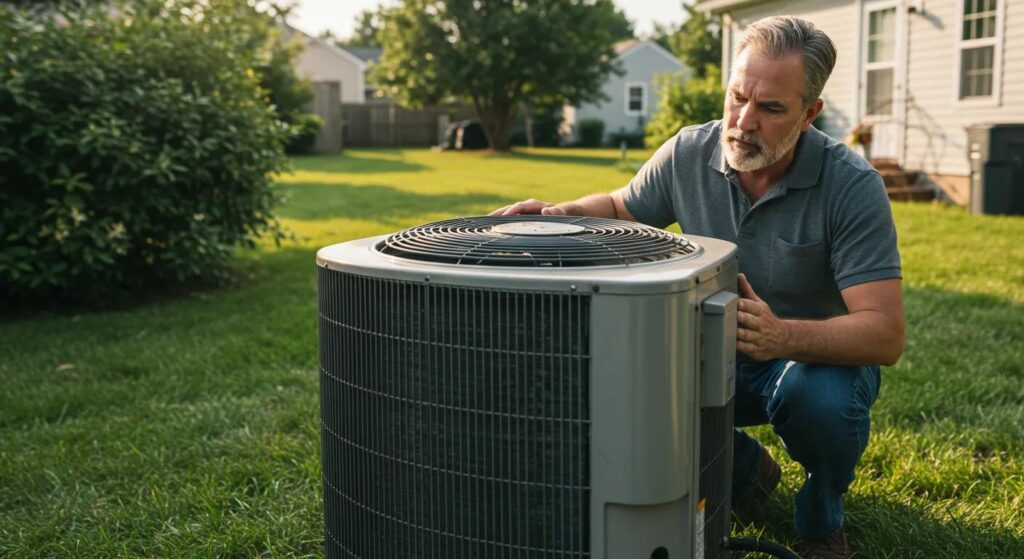
Recognizing when it’s time for an AC replacement instead of a repair helps Brookhaven homeowners avoid escalating costs and comfort issues. Key indicators include the age of your equipment, frequent repair needs, reduced cooling capacity, and significant increases in energy bills. Older systems often lose efficiency and require more frequent component work, making replacement more cost-effective in the long run. Uneven cooling, persistent hot spots, and long runtimes despite maintenance suggest underlying capacity or airflow problems that may warrant a system replacement. Evaluating repair costs against the expected remaining lifespan of the equipment and the potential efficiency gains from new technology can help you make the right decision.
The bulleted list below highlights the most common signs that indicate replacement is the better choice over continued repairs.
- Frequent Repairs: When the same components fail repeatedly, ongoing repair costs often exceed the value of replacement.
- System Age: Systems older than their typical service life tend to show declining efficiency and a higher risk of malfunctions.
- Rising Energy Bills: Unexplained increases in cooling costs, even with consistent usage, suggest a drop in system efficiency.
- Inadequate Cooling: Long runtimes and uneven temperatures across rooms point to performance or sizing issues.
These signs suggest replacement when repair costs and performance degradation outweigh the benefits of continued patching, guiding you toward the next step: assessing payback and the best time to upgrade.
How Do Age and Frequent Repairs Signal the Need for AC Replacement?
Age and frequent repairs often indicate that your system is nearing the end of its economic lifespan. Recurring failures can signal worn compressors, motors, or coils that become less reliable and less efficient. A pattern of repeated parts replacements or escalating repair bills usually means you’re getting a diminished return on investment for further repairs. A new system can restore consistent cooling and improve energy efficiency. Homeowners should compare the total cost of repairs to the projected savings from a new high-efficiency system to determine the financial break-even point. Consulting with a qualified estimator during a free on-site assessment will clarify whether repair or replacement is the most prudent path.
Frequent repair cycles naturally lead homeowners to examine their energy bills and observable performance issues, which are discussed next.
What Are the Warning Signs in Energy Bills and Cooling Performance?
Warning signs related to energy bills and performance include a steady upward trend in monthly cooling costs, longer run times to reach desired temperatures, and uneven temperatures across rooms despite balanced vents. These all indicate declining system efficiency or improper sizing. Homeowners can compare seasonal bills year-over-year to quantify increased energy consumption and perform simple checks, like measuring the temperature difference between supply and return registers. Persistent issues after basic maintenance suggest deeper problems—such as refrigerant leaks, failing compressors, or duct leakage—that warrant a professional evaluation for replacement. Documenting these symptoms helps your estimator recommend the most cost-effective solution.
When efficiency losses accumulate, upgrading to a modern system with a higher SEER rating can be financially justified. The next section provides guidance on when to upgrade.
When Is It Time to Upgrade to a More Energy-Efficient AC System?
It’s time to upgrade when the projected energy savings, improved comfort, and potential incentives outweigh the incremental equipment and installation costs within a reasonable payback period, or when system unreliability impacts your daily comfort. Calculating the simple payback—by dividing the additional cost by the estimated annual energy savings—helps determine financial feasibility. Factoring in possible utility rebates or tax incentives can further improve the economics. Upgrading also enhances indoor air quality and ensures compatibility with smart thermostats that reduce runtime and improve control. Homeowners should request modeled energy-use comparisons during their free estimate to make an informed decision about when to upgrade.
Knowing when to upgrade prompts homeowners to consider efficiency metrics like SEER and proper sizing, which are explored next.
How SEER Ratings and AC Sizing Impact Your Brookhaven Home’s Cooling Efficiency
SEER ratings and correct AC sizing are the primary technical factors that determine operating cost, comfort, and equipment lifespan. SEER measures seasonal efficiency, while proper sizing ensures effective dehumidification and balanced runtimes. A higher SEER rating means the system provides more cooling per unit of electricity under typical seasonal conditions, reducing annual energy consumption when paired with correct installation. Oversized systems short-cycle, failing to remove humidity effectively, while undersized systems run continuously and struggle to reach setpoints. Both scenarios reduce comfort and increase wear. Professional load calculations and selecting an appropriate SEER balance help Brookhaven homeowners achieve efficient, comfortable cooling.
The table below maps SEER ranges to expected energy performance and typical value in Brookhaven’s climate, guiding sensible choices.
| SEER Range | Expected Energy Savings vs. Baseline | Typical Lifespan/Value |
|---|---|---|
| 13–14 | Standard efficiency; minimal extra savings | Baseline value; lower upfront cost |
| 15–16 | Moderate savings; better performance at partial load | Good balance of cost and efficiency |
| 17+ | High efficiency; significant seasonal savings | Higher upfront cost; best long-term savings |
What Is a SEER Rating and Why Is It Important?
A SEER rating (Seasonal Energy Efficiency Ratio) measures the cooling output of an AC system over a typical cooling season divided by its electrical energy input. A higher SEER means greater seasonal efficiency. For homeowners, a higher SEER reduces kilowatt-hour usage for cooling, lowering monthly electric bills and often leading to a faster payback in homes with high cooling demands. However, the actual benefit depends on correct installation and local usage patterns—poor installation can negate SEER gains—so professional setup is crucial to achieve advertised savings. Understanding SEER helps homeowners weigh long-term operating costs against higher equipment prices.
Correct sizing ensures those SEER gains translate into real-world efficiency and comfort, which is addressed next.
How Do You Determine the Right AC Size for Your Home?
Determining the right AC size requires a Manual J load calculation. This process evaluates square footage, the building envelope, insulation levels, orientation, window area, and occupancy to accurately estimate the cooling load. Square footage alone is not enough, as two homes with the same area can have vastly different heat gains based on insulation and solar exposure. A professional load calculation prevents oversizing and underperformance. Ductwork condition and airflow limitations identified during the assessment inform final equipment selection and may lead to recommended duct repairs. Using a qualified technician to perform the load calculation ensures the selected system will meet both capacity and dehumidification needs.
Studies have shown that a significant percentage of residential AC systems are installed with capacities exceeding the calculated load, which can lead to increased energy consumption and reduced dehumidification.
Residential Air Conditioning Sizing and Energy Consumption: The Impact of Capacity on Performance
The installed capacities of central air conditioning systems in 368 newly constructed homes in Florida were compared against Manual J load values derived from house audit data. Over 50% of the homes featured installed systems with a cooling capacity exceeding 120% of the calculated Manual J value. Among the 78 heat pump homes included in this study, 31% had installed heating capacity greater than 120% of their respective calculated Manual J values. Analysis of submetered data from the air conditioning systems revealed a discernible increase in peak energy consumption for systems sized above 120% of Manual J calculations. The study illustrates the influence of system sizing on the run-time fractions of the units. Homes with systems sized smaller than the calculated Manual J value exhibited a tendency towards higher percentages of maximum hourly run-time fractions. Minimal differences were observed in binned percentages of substantial run-time fractions between homes with installed-to-calculated ratios ranging from 1.0 to 1.2 and those with ratios exceeding 1.2.
The effect of residential equipment capacity on energy use, demand, and run-time, 1997
Accurate sizing aligns with local permit requirements and best practices. The final subsection covers permit responsibilities.
Are There Local Regulations or Recommendations for AC Installation in Brookhaven?
Local regulations often require permits and inspections for equipment change-outs and system modifications to ensure safety and code compliance. Installers typically handle permit pulls and coordinate inspections with local authorities. DeKalb County or Brookhaven-specific requirements may apply to electrical modifications, refrigerant handling, and equipment placement. Expect your installer to confirm applicable permits during the proposal phase. Ensuring the installer includes permit costs in the written quote prevents surprises and documents compliance for warranty and resale purposes. Confirming permit responsibility early in the process reduces delays and supports a smooth installation.
With SEER and sizing considerations in mind, homeowners can benefit from concise answers to common installation questions in the final section.
Frequently Asked Questions About Brookhaven Residential AC Installation
This FAQ section provides straightforward answers to common questions Brookhaven homeowners have about installation timelines, permits, maintenance, and smart thermostats. These concise responses help you quickly understand expectations for installation duration, permitting likelihood, and post-installation care to maintain efficiency and warranty coverage. The answers below are designed for quick reference and to help you prepare for discussions with potential installers. Use these Q&As as a checklist when evaluating proposals and scheduling an on-site estimate.
How Long Does AC Installation Typically Take in Brookhaven?
A complete AC system replacement usually takes one full working day for straightforward swap-outs where ducts and electrical connections are adequate. However, more complex jobs involving duct modifications or electrical upgrades can extend to multiple days. Factors that lengthen the duration include permit processing times, the need to fabricate duct sections, or difficult equipment access. Installers typically provide an estimated timeline in their written proposal and will confirm any scheduling constraints before work begins. Planning for minor disruptions and ensuring clear access to equipment areas helps keep the project on schedule.
This timeline guidance leads into permit questions, which are important for compliance and planning.
Do You Need a Permit for Residential AC Installation in Brookhaven?
Permits are often required for equipment change-outs, electrical work, and any structural modifications. A professional installer will typically handle permit applications and inspections as part of the project scope. Confirming permit responsibility in advance avoids delays and ensures the work meets local building codes, which also protects warranty validity and resale documentation. Homeowners should expect permit fees to be itemized in the quote and to receive inspection documentation upon project completion. If you’re unsure, ask the installer to explain which permits apply to your specific job during the estimate.
How Do You Maintain Your New AC System After Installation?
Maintaining your new AC system involves regular filter changes—typically monthly or as recommended—annual professional tune-ups to check refrigerant charge and airflow, and periodic duct inspections to ensure sealed connections and balanced distribution. Routine maintenance preserves system efficiency, extends equipment life, and helps detect minor issues before they become costly repairs. Keeping a maintenance log and scheduling annual service are practical steps for homeowners. Proper maintenance also supports warranty conditions, which often require documented professional service. Establishing a regular maintenance plan with your installer ensures predictable upkeep and peak performance.
Routine maintenance complements smart controls, whose benefits are summarized in the final FAQ entry.
What Are the Advantages of Upgrading to a Smart Thermostat?
Smart thermostats offer scheduling, remote access, and adaptive learning capabilities that reduce unnecessary runtime and improve comfort consistency, leading to measurable energy savings when paired with a properly sized system. These devices enable zoning strategies and can integrate with home automation for more precise control over comfort and efficiency. Professional setup ensures optimal sensor placement and wiring. Smart thermostats also provide runtime data and diagnostics that help identify performance issues early, improving maintenance responsiveness. For homeowners seeking both convenience and reduced operating costs, professional installation of a compatible smart thermostat is a worthwhile upgrade.
The current SEER rating system, while a national standard, may not fully capture real-world performance variations across different climates and installation qualities.
Limitations of the Seasonal Energy Efficiency Ratio (SEER): Real-World Performance and Regional Climate Considerations
The Seasonal Energy Efficiency Ratio (SEER) is the sole regulatory standard for rating the energy efficiency of central air conditioning systems in the United States. SEER 13 superseded SEER 10 as the minimum standard in January 2006. SEER represents a national average rating. There is increasing apprehension that the test conditions employed for SEER do not accurately represent performance in actual residential installations, as indicated by field data. Furthermore, concerns exist that SEER fails to account for regional performance requirements, such as peak operational efficiency in hot climates or effective moisture control in humid environments. Achieving substantial national energy savings increases with current metrics would necessitate intricate and costly equipment. We advocate for two modifications: (1) Adjusting test parameters, including external static pressure levels and default fan power values, which significantly influence the discrepancy between laboratory ratings and field experience. Equipment optimized for real-world conditions will demonstrate greater efficiency in actual operation. (2) Implementing rating methodologies that address regional demands. Manufacturers currently…
Can SEER Be Saved?
Air Heat America provides expert installation for air conditioning systems and new HVAC installations. We offer free estimates on new installs and have financing available to help Brookhaven homeowners explore their options and schedule an on-site consultation. Call us today at 404-660-4183 to learn more or request your free estimate.
Frequently Asked Questions
What Should I Consider When Choosing an AC System for My Home?
When selecting an AC system for your Brookhaven home, consider factors such as the size of your home, existing ductwork, and your specific cooling needs. Evaluate the system types available—central AC, heat pumps, and ductless mini-splits—and their respective SEER ratings, which indicate energy efficiency. Additionally, think about your budget for both installation and long-term operating costs. A professional assessment can help you understand the best options tailored to your home’s unique characteristics and climate demands.
How Can I Improve the Efficiency of My Existing AC System?
To enhance the efficiency of your existing AC system, start with regular maintenance, including changing filters and cleaning coils. Ensure that ducts are sealed and insulated properly to prevent air leaks. Consider upgrading to a smart thermostat, which can optimize cooling schedules based on your habits. Additionally, evaluate your home’s insulation and shading to reduce heat gain. If your system is older, consulting a professional about potential upgrades or replacements may also yield significant efficiency improvements.
What Are the Common Mistakes to Avoid During AC Installation?
Common mistakes during AC installation include improper sizing of the unit, which can lead to inefficiency and discomfort, and neglecting to assess the condition of existing ductwork. Failing to secure necessary permits can also result in legal issues and warranty voids. Additionally, not following manufacturer installation guidelines can compromise system performance. To avoid these pitfalls, always hire a licensed and experienced contractor who can ensure compliance with local codes and best practices.
How Often Should I Schedule Professional Maintenance for My AC System?
It is recommended to schedule professional maintenance for your AC system at least once a year, ideally before the cooling season begins. This annual service typically includes checking refrigerant levels, cleaning coils, inspecting electrical components, and ensuring proper airflow. Regular maintenance helps identify potential issues early, improves efficiency, and extends the lifespan of your system. Some homeowners may benefit from biannual maintenance, especially in regions with extreme weather conditions, to ensure optimal performance year-round.
What Are the Benefits of Upgrading to a Higher SEER Rated AC Unit?
Upgrading to a higher SEER rated AC unit offers several benefits, including lower energy bills due to improved efficiency. Higher SEER ratings indicate that the unit uses less electricity to provide the same cooling output, which can lead to significant savings over time. Additionally, these units often come with advanced features that enhance comfort and control. While the initial investment may be higher, the long-term savings and potential utility rebates can make it a financially sound decision.
What Should I Do If My AC System Is Not Cooling Effectively?
If your AC system is not cooling effectively, first check the thermostat settings to ensure it is set correctly. Inspect air filters and replace them if they are dirty, as clogged filters can restrict airflow. Additionally, check for any visible signs of damage or leaks in the ductwork. If these steps do not resolve the issue, it is advisable to contact a professional technician to diagnose and address potential problems, such as refrigerant levels or mechanical failures, to restore proper cooling performance.
Conclusion
Investing in professional AC installation in Brookhaven ensures optimal comfort and energy efficiency tailored to your home’s specific needs. By choosing a licensed and insured contractor, you protect your investment while benefiting from expert guidance on system selection and installation. Understanding the importance of SEER ratings and proper sizing can lead to significant long-term savings on energy bills. Contact Air Heat America today for a free estimate and take the first step towards a more comfortable home.

